Optimization through the Levenberg—Marquardt Backpropagation Method for a Magnetohydrodynamic Squeezing Flow System
Abstract
:1. Introduction
- A soft computing technique-based Levenberg–Marquardt algorithm is used to solve the fluid flow problem MHDSF.
- Mathematical simplification is presented for MHDSF in terms of partial differential equations to be easier in dealing with the proposed model (LMB-NN).
- Creation of the data set for a suggested (LMB-NN) based on squeezing parameter, Prandtl number, Brownian motion parameter, and thermophoresis parameter is used in solution (MHDSF) by employing the Runge–Kutta technique for various scenarios and cases.
- The processes of training, testing, and validation that are created with (LMB-NN) is implemented for every scenario and case of (MHDSF) to find the approximate solution and comparison with standard results.
- The performance of NN-BLMS is established through convergence plots of mean squared error-based fitness/merit function, state transition, regression metrics, and histogram error.
2. Mathematical Formulation
3. Solution Methodology
- of the data for the training.
- of the data for the testing.
- of the data for the validation.
4. Results and Discussion
5. Conclusions
Author Contributions
Funding
Institutional Review Board Statement
Informed Consent Statement
Data Availability Statement
Acknowledgments
Conflicts of Interest
References
- Stefan, J. Versuche über die scheinbare Adhäsion. Ann. Der Phys. 1875, 230, 316–318. [Google Scholar] [CrossRef] [Green Version]
- Reynolds, O. IV. On the theory of lubrication and its application to Mr. Beauchamp tower’s experiments, including an experimental determination of the viscosity of olive oil. Philos. Trans. R. Soc. Lond. 1886, 177, 157–234. [Google Scholar]
- Atlas, M.; Haq, R.U.; Mekkaoui, T. Active and zero flux of nanoparticles between a squeezing channel with thermal radiation effects. J. Mol. Liq. 2016, 223, 289–298. [Google Scholar] [CrossRef]
- Domairry, G.; Hatami, M. Squeezing Cu–water nanofluid flow analysis between parallel plates by DTM-Padé Method. J. Mol. Liq. 2014, 193, 37–44. [Google Scholar] [CrossRef]
- Domairry, G.; Aziz, A. Approximate analysis of MHD squeeze flow between two parallel disks with suction or injection by homotopy perturbation method. Math. Probl. Eng. 2009, 2009, 603916. [Google Scholar] [CrossRef] [Green Version]
- Buongiorno, J. Convective transport in nanofluids. J. Heat Transf. 2006, 128, 240–250. [Google Scholar] [CrossRef]
- Khan, W.A.; Pop, I. Boundary-layer flow of a nanofluid past a stretching sheet. Int. J. Heat Mass Transf. 2010, 53, 2477–2483. [Google Scholar] [CrossRef]
- Turkyilmazoglu, M. Exact analytical solutions for heat and mass transfer of MHD slip flow in nanofluids. Chem. Eng. Sci. 2012, 84, 182–187. [Google Scholar] [CrossRef]
- Masuda, H.; Ebata, A.; Teramae, K. Alteration of thermal conductivity and viscosity of liquid by dispersing ultra-fine particles. Dispersion of Al2O3, SiO2 and TiO2 ultra-fine particles. NETSU BUSSEI 1993, 7, 227–233. [Google Scholar] [CrossRef]
- CChoi, S.U.S.; Eastman, J.A. Enhancing Thermal Conductivity of Fluids with Nanoparticles; No. ANL/MSD/CP-84938; CONF-951135-29; Argonne National Lab.: Lemont, IL, USA, 1995. [Google Scholar]
- Eastman, J.A.; Choi, S.U.S.; Li, S.; Yu, W.; Thompson, L.J. Anomalously increased effective thermal conductivities of ethylene glycol-based nanofluids containing copper nanoparticles. Appl. Phys. Lett. 2001, 78, 718–720. [Google Scholar] [CrossRef]
- Shoaib, M.; Raja, M.A.Z.; Sabir, M.T.; Awais, M.; Islam, S.; Shah, Z.; Kumam, P. Numerical analysis of 3D MHD hybrid nanofluid over a rotational disk in the presence of thermal radiation with Joule heating and viscous dissipation effects using Lobatto IIIA technique. Alex. Eng. J. 2021, 60, 3605–3619. [Google Scholar] [CrossRef]
- Nagoor, A.H.; Alaidarous, E.S.; Sabir, M.T.; Shoaib, M.; Raja, M.A.Z. Numerical treatment for three-dimensional rotating flow of carbon nanotubes with Darcy–Forchheimer medium by the Lobatto IIIA technique. Aip Adv. 2020, 10, 025016. [Google Scholar] [CrossRef] [Green Version]
- Shoaib, M.; Raja, M.A.Z.; Sabir, M.T.; Islam, S.; Shah, Z.; Kumam, P.; Alrabaiah, H. Numerical investigation for rotating flow of MHD hybrid nanofluid with thermal radiation over a stretching sheet. Sci. Rep. 2020, 10, 1–15. [Google Scholar] [CrossRef]
- Bukhari, A.H.; Sulaiman, M.; Raja, M.A.Z.; Islam, S.; Shoaib, M.; Kumam, P. Design of a hybrid NAR-RBFs neural network for nonlinear dusty plasma system. Alex. Eng. J. 2020, 59, 3325–3345. [Google Scholar] [CrossRef]
- Bukhari, A.H.; Raja, M.A.Z.; Sulaiman, M.; Islam, S.; Shoaib, M.; Kumam, P. Fractional neuro-sequential ARFIMA-LSTM for financial market forecasting. IEEE Access 2020, 8, 71326–71338. [Google Scholar] [CrossRef]
- Bukhari, A.H.; Sulaiman, M.; Islam, S.; Shoaib, M.; Kumam, P.; Raja, M.A.Z. Neuro-fuzzy modeling and prediction of summer precipitation with application to different meteorological stations. Alex. Eng. J. 2020, 59, 101–116. [Google Scholar] [CrossRef]
- Ahmad, I.; Ilyas, H.; Urooj, A.; Aslam, M.S.; Shoaib, M.; Raja, M.A.Z. Novel applications of intelligent computing paradigms for the analysis of nonlinear reactive transport model of the fluid in soft tissues and microvessels. Neural Comput. Appl. 2019, 31, 9041–9059. [Google Scholar] [CrossRef]
- Waseem, W.; Sulaiman, M.; Kumam, P.; Shoaib, M.; Raja, M.A.Z.; Islam, S. Investigation of singular ordinary differential equations by a neuroevolutionary approach. PLoS ONE 2020, 15, e0235829. [Google Scholar] [CrossRef] [PubMed]
- Waseem, W.; Sulaiman, M.; Islam, S.; Kumam, P.; Nawaz, R.; Raja, M.A.Z.; Farooq, M.; Shoaib, M. A study of changes in temperature profile of porous fin model using cuckoo search algorithm. Alex. Eng. J. 2020, 59, 11–24. [Google Scholar] [CrossRef]
- Ilyas, H.; Ahmad, I.; Raja, M.A.Z.; Shoaib, M. A novel design of Gaussian WaveNets for rotational hybrid nanofluidic flow over a stretching sheet involving thermal radiation. Int. Commun. Heat Mass Transf. 2021, 123, 105196. [Google Scholar] [CrossRef]
- Khan, I.; Raja, M.A.Z.; Shoaib, M.; Kumam, P.; Alrabaiah, H.; Shah, Z.; Islam, S. Design of Neural Network With Levenberg–Marquardtt and Bayesian Regularization Backpropagation for Solving Pantograph Delay Differential Equations. IEEE Access 2020, 8, 137918–137933. [Google Scholar] [CrossRef]
- Sabir, Z.; Umar, M.; Guirao, J.L.; Shoaib, M.; Raja, M.A.Z. Integrated intelligent computing paradigm for nonlinear multi-singular third-order Emden–Fowler equation. Neural Comput. Appl. 2020, 33, 1–20. [Google Scholar] [CrossRef]
- Sabir, Z.; Raja, M.A.Z.; Umar, M.; Shoaib, M. Design of neuro-swarming-based heuristics to solve the third-order nonlinear multi-singular Emden–Fowler equation. Eur. Phys. J. Plus 2020, 135, 1–17. [Google Scholar] [CrossRef]
- Sabir, Z.; Raja, M.A.Z.; Guirao, J.L.; Shoaib, M. Integrated intelligent computing with neuro-swarming solver for multi-singular fourth-order nonlinear Emden–Fowler equation. Comput. Appl. Math. 2020, 39, 1–18. [Google Scholar] [CrossRef]
- Umar, M.; Sabir, Z.; Raja, M.A.Z.; Aguilar, J.G.; Amin, F.; Shoaib, M. Neuro-swarm intelligent computing paradigm for nonlinear HIV infection model with CD4+ T-cells. Math. Comput. Simul. 2021, 188, 241–253. [Google Scholar] [CrossRef]
- Shoaib, M.; Raja, M.A.Z.; Sabir, M.T.; Bukhari, A.H.; Alrabaiah, H.; Shah, Z.; Kumam, P.; Islam, S. A Stochastic Numerical Analysis Based on Hybrid NAR-RBFs Networks Nonlinear SITR Model for Novel COVID-19 Dynamics. Comput. Methods Programs Biomed. 2021, 202, 105973. [Google Scholar] [CrossRef]
- Ahmad, I.; Raja, M.A.Z.; Ramos, H.; Bilal, M.; Shoaib, M. Integrated neuro-evolution-based computing solver for dynamics of nonlinear corneal shape model numerically. Neural Comput. Appl. 2020, 33, 5753–5769. [Google Scholar] [CrossRef]
- Umar, M.; Raja, M.A.Z.; Sabir, Z.; Alwabli, A.S.; Shoaib, M. A stochastic computational intelligent solver for numerical treatment of mosquito dispersal model in a heterogeneous environment. Eur. Phys. J. Plus 2020, 135, 1–23. [Google Scholar] [CrossRef]
- Faisal, F.; Shoaib, M.; Raja, M.A.Z. A new heuristic computational solver for nonlinear singular Thomas–Fermi system using evolutionary optimized cubic splines. Eur. Phys. J. Plus 2020, 135, 1–29. [Google Scholar]
- Uddin, I.; Ullah, I.; Raja, M.A.Z.; Shoaib, M.; Islam, S.; Muhammad, T. Design of intelligent computing networks for numerical treatment of thin film flow of Maxwell nanofluid over a stretched and rotating surface. Surf. Interfaces 2021, 24, 101107. [Google Scholar] [CrossRef]
- Shoaib, M.; Raja, M.A.Z.; Khan, M.A.R.; Farhat, I.; Awan, S.E. Neuro-Computing Networks for Entropy Generation under the Influence of MHD and Thermal Radiation. Surf. Interfaces 2021, 25, 101243. [Google Scholar] [CrossRef]
- Aljohani, J.L.; Alaidarous, E.S.; Raja, M.A.Z.; Shoaib, M.; Alhothuali, M.S. Intelligent computing through neural networks for numerical treatment of non-Newtonian wire coating analysis model. Sci. Rep. 2021, 11, 1–32. [Google Scholar] [CrossRef] [PubMed]
- Hayat, T.; Muhammad, T.; Qayyum, A.; Alsaedi, A.; Mustafa, M. On squeezing flow of nanofluid in the presence of magnetic field effects. J. Mol. Liq. 2016, 213, 179–185. [Google Scholar] [CrossRef]
- Shoaib, M.; Akhtar, R.; Khan, M.A.R.; Rana, M.A.; Siddiqui, A.M.; Zhiyu, Z.; Raja, M.A.Z. A Novel Design of Three-Dimensional MHD Flow of Second-Grade Fluid past a Porous Plate. Math. Probl. Eng. 2019, 2019, 584397. [Google Scholar] [CrossRef] [Green Version]
- Imran, A.; Akhtar, R.; Zhiyu, Z.; Shoaib, M.; Zahoor Raja, M.A. MHD and heat transfer analyses of a fluid flow through scraped surface heat exchanger by analytical solver. Aip Adv. 2019, 9, 075201. [Google Scholar] [CrossRef] [Green Version]
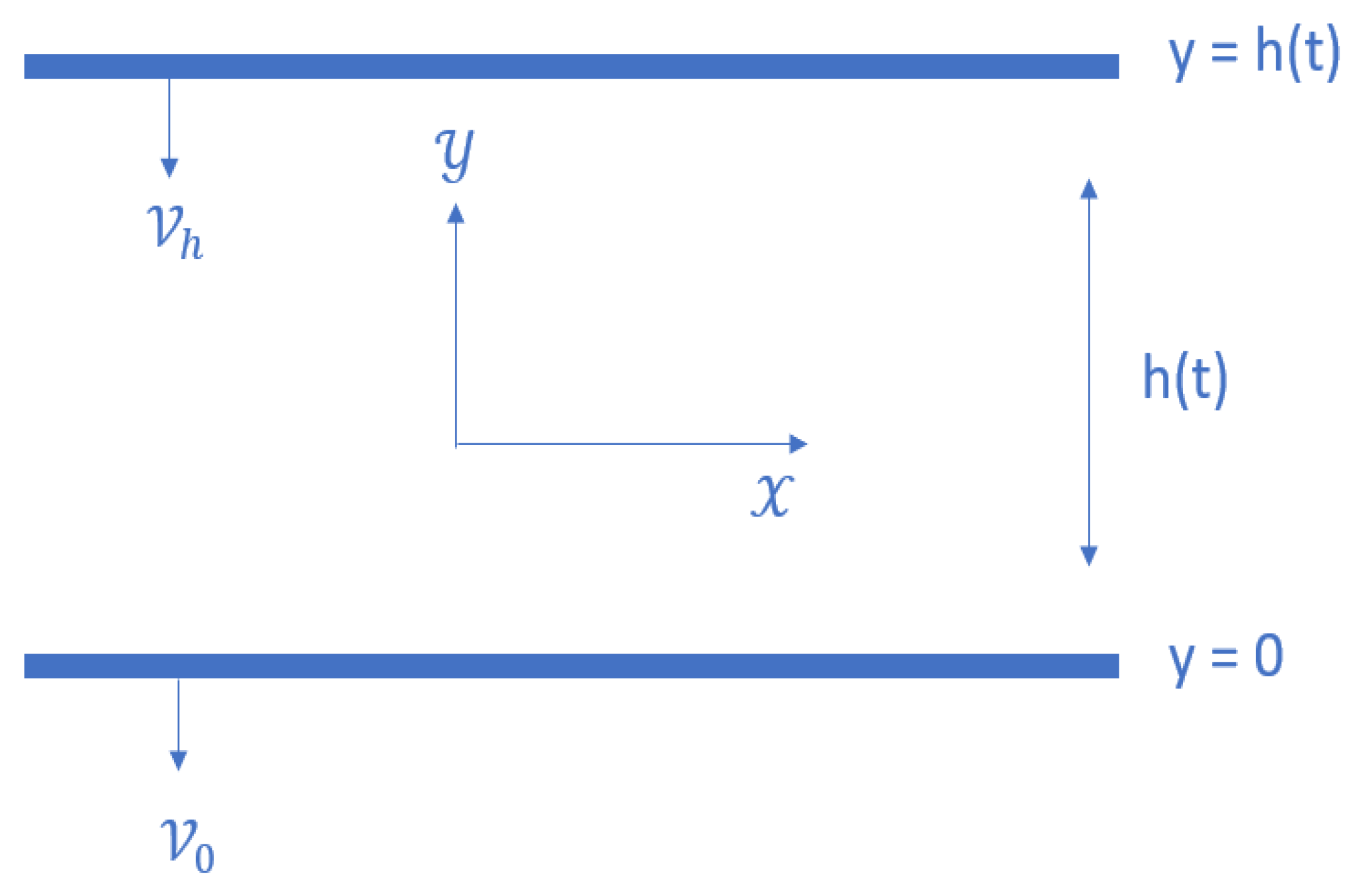
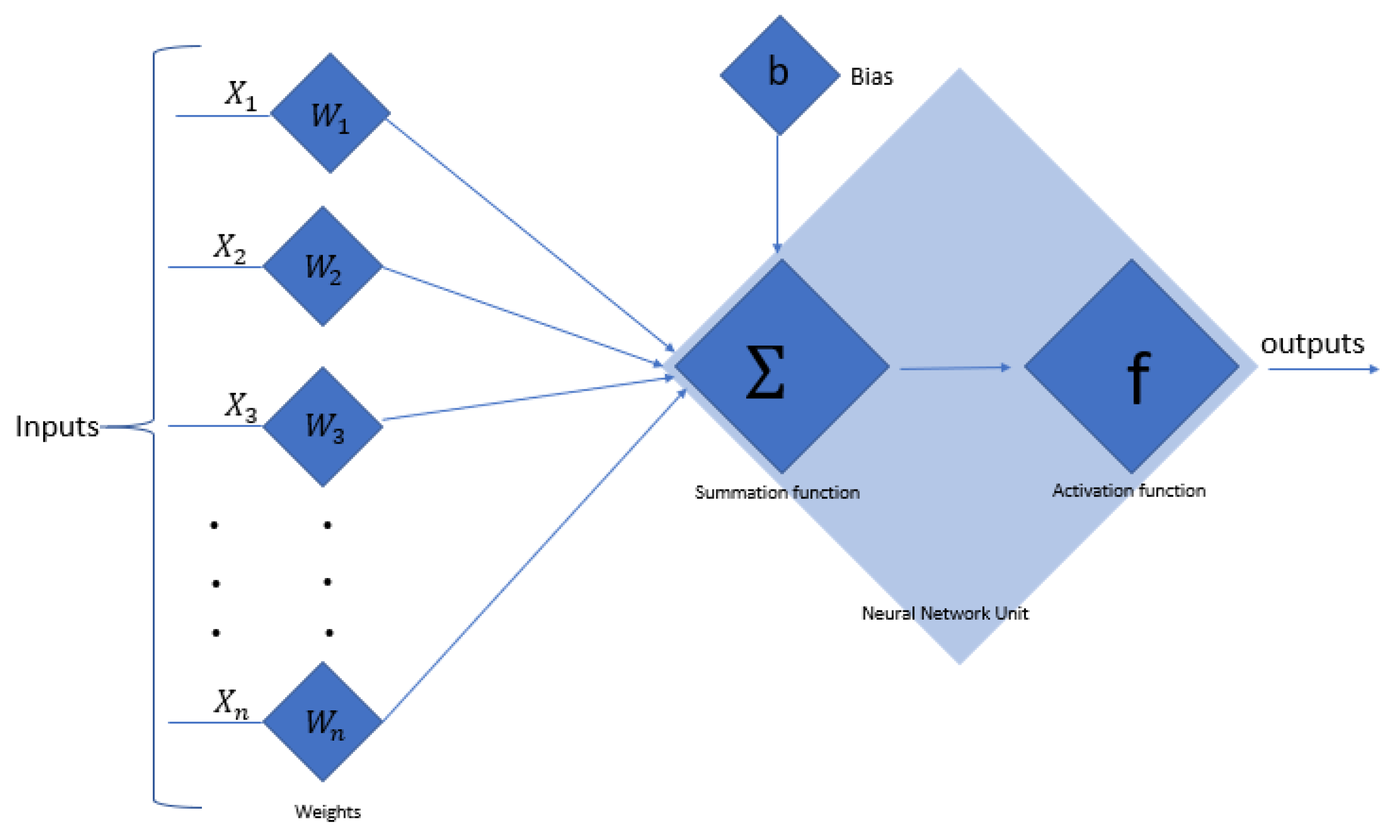

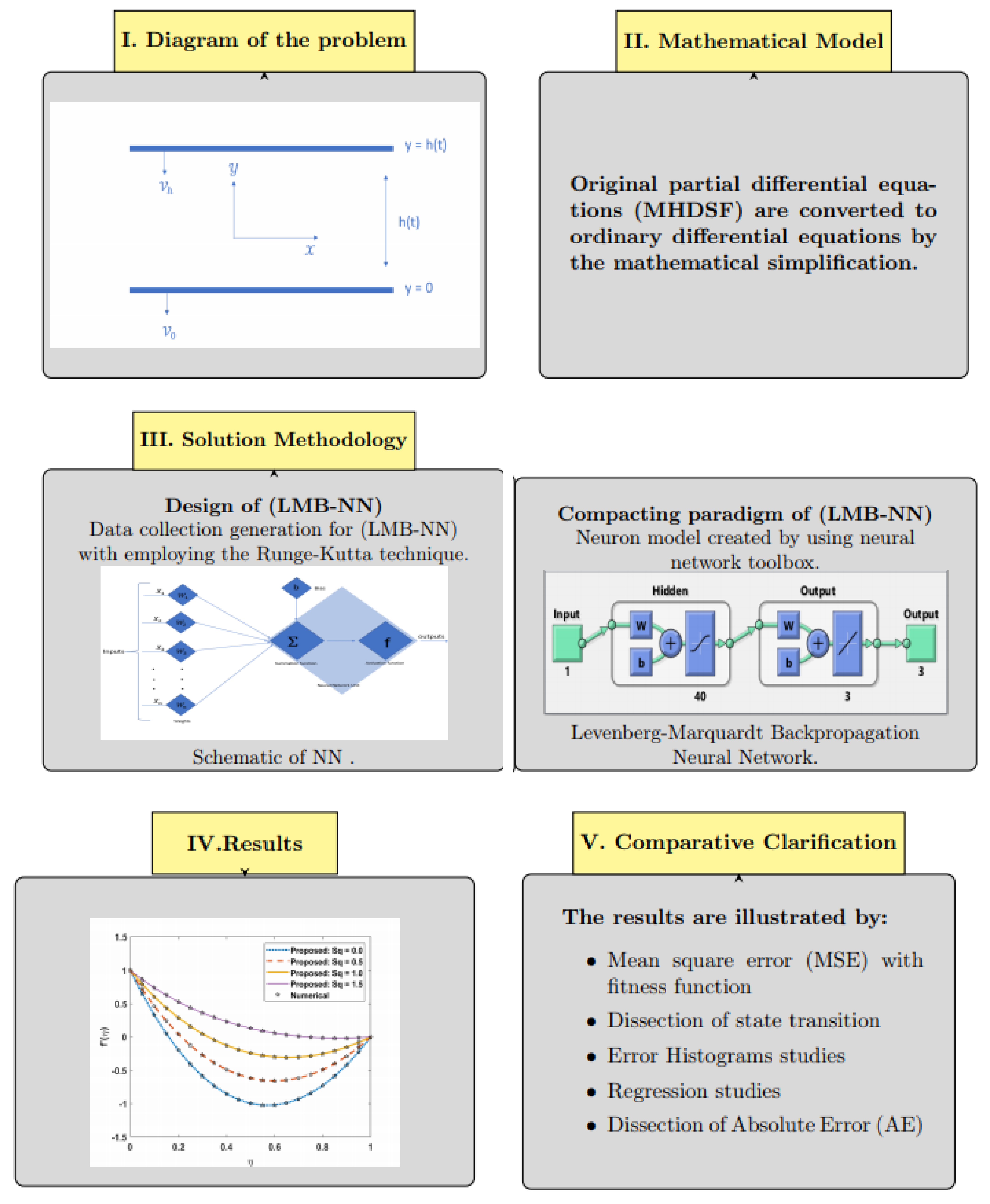
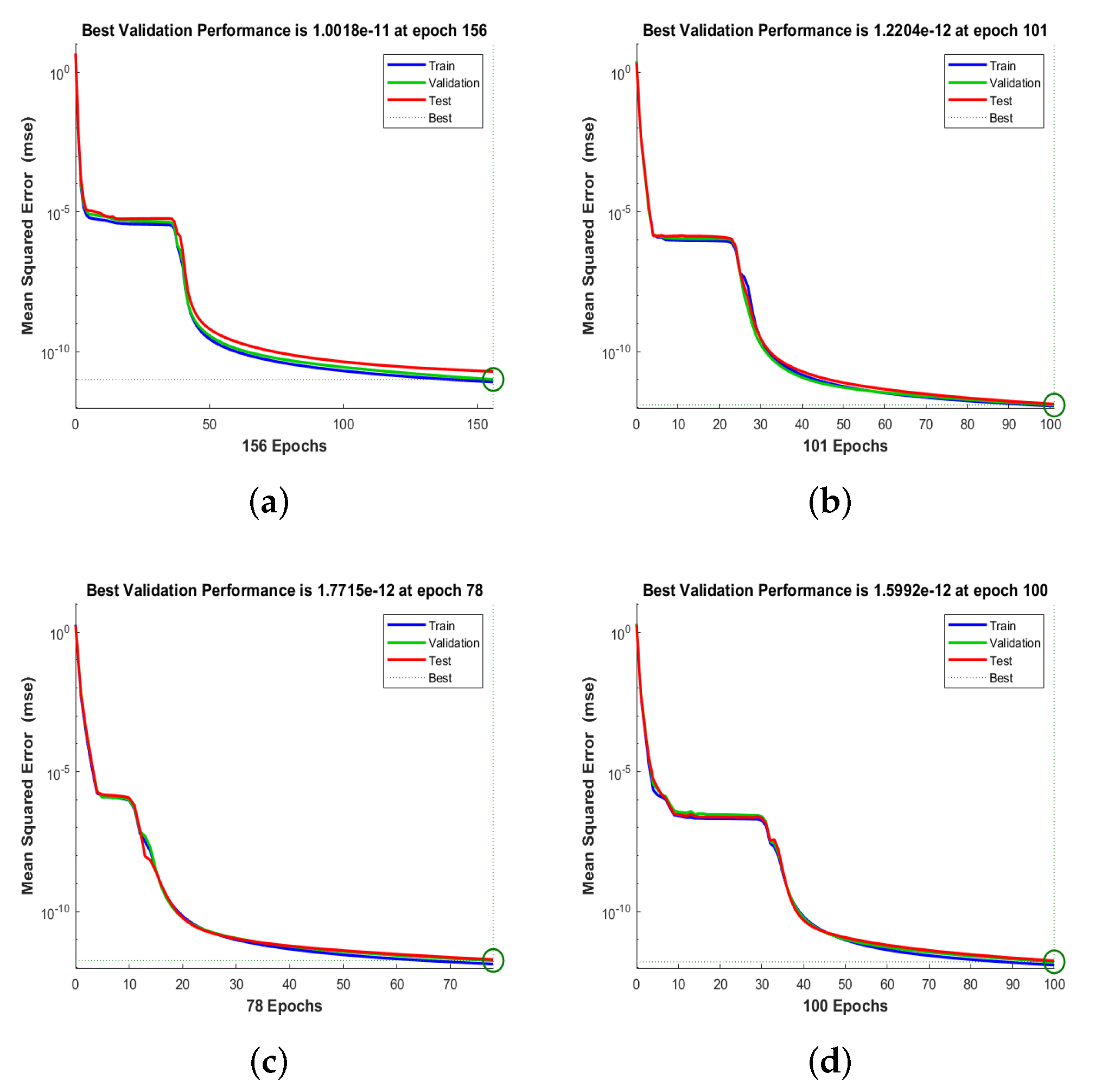
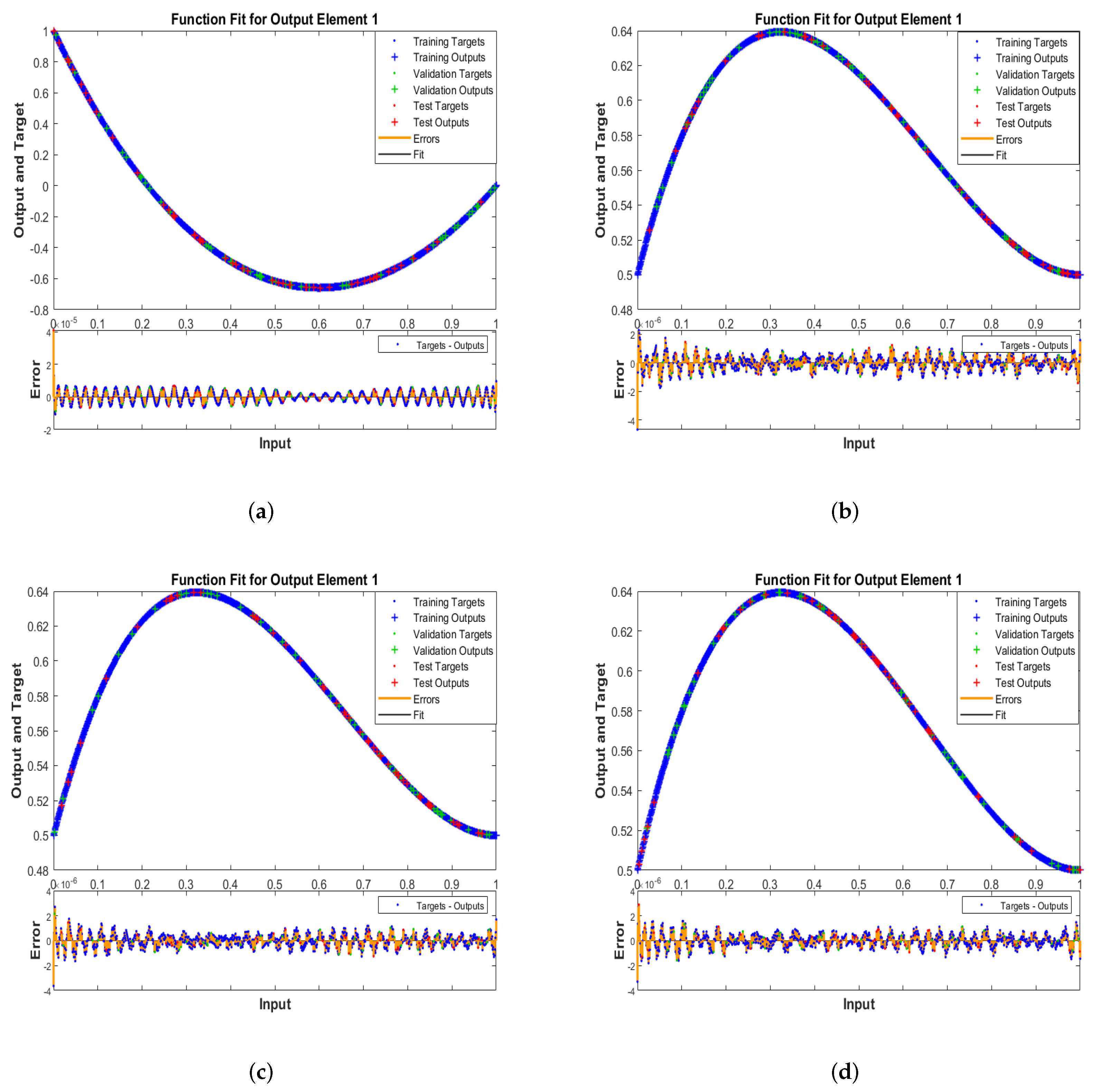


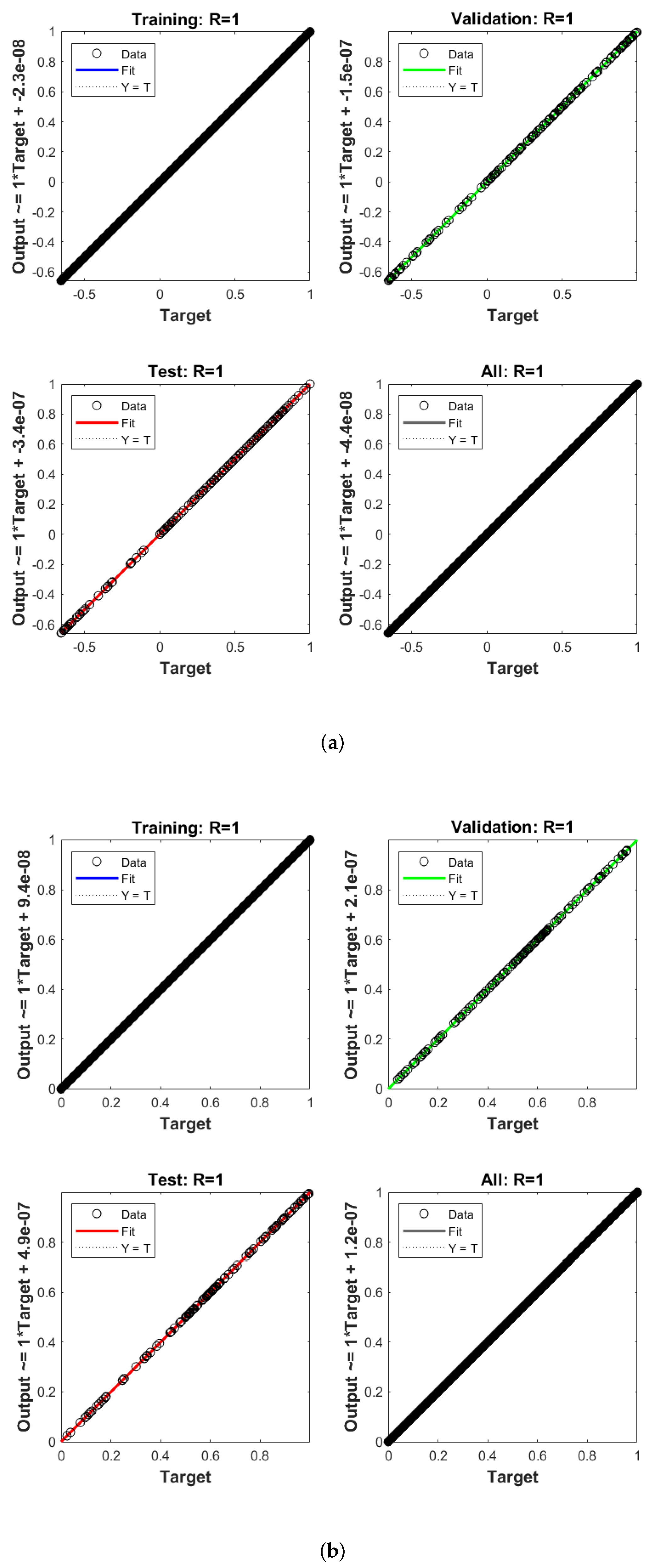

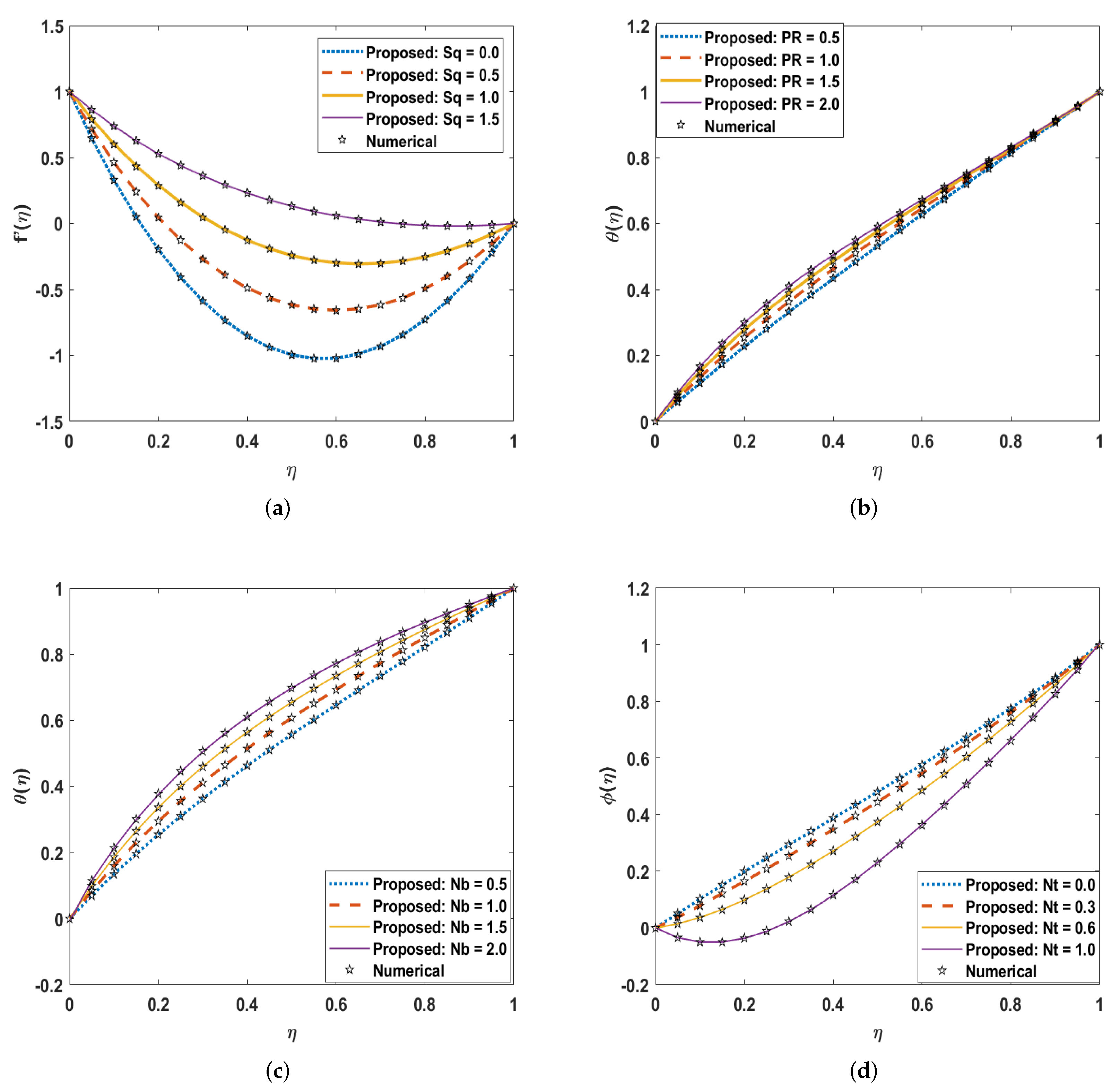
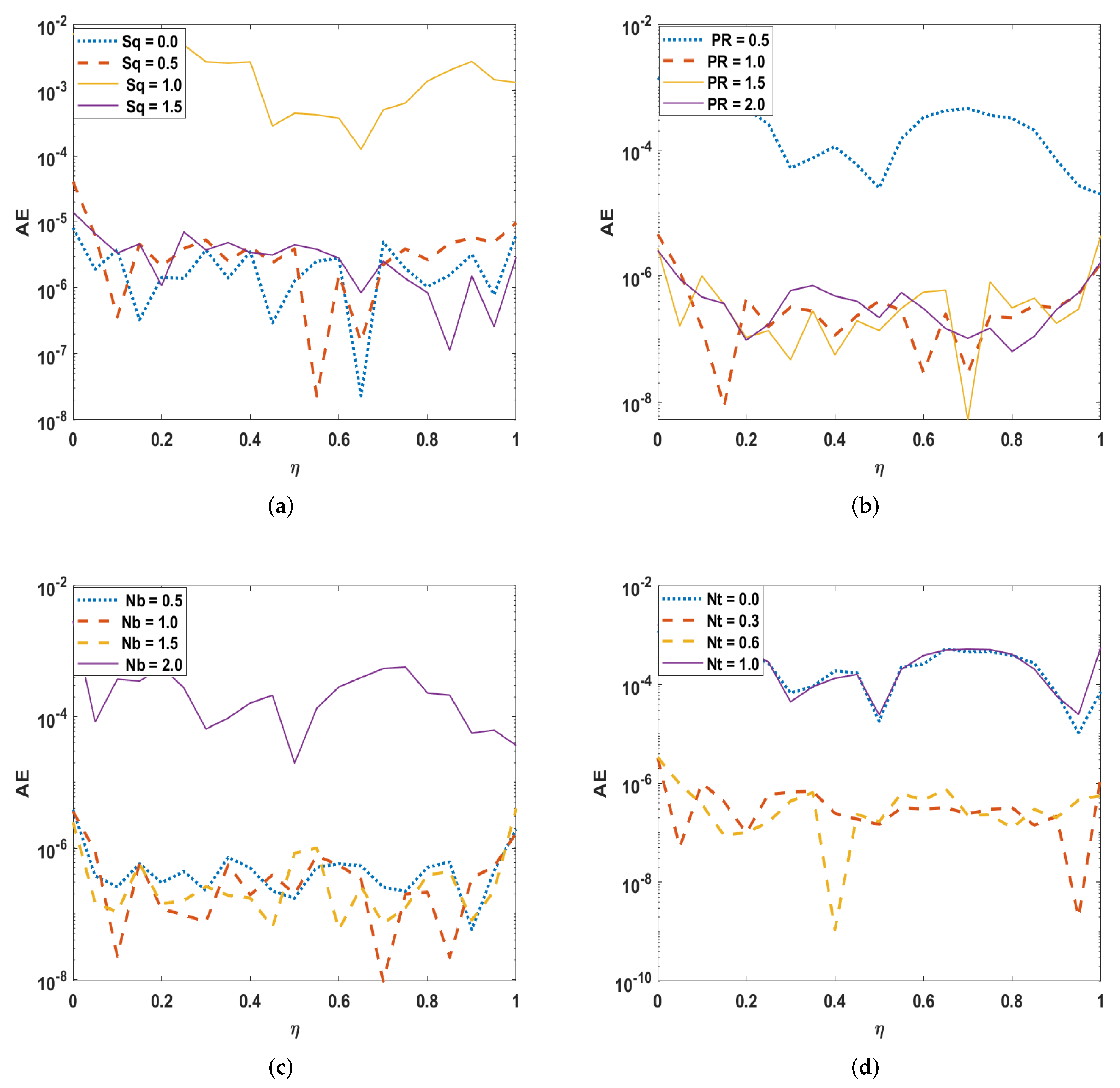
| Scenario | Case | Physical Quantities of Interest | ||||||||||||||
|---|---|---|---|---|---|---|---|---|---|---|---|---|---|---|---|---|
| S | M | |||||||||||||||
| (1) Variation in | 1 | 0.5 | 0.5 | 0.5 | 0.2 | 0.0 | 1.0 | 1.0 | ||||||||
| 2 | 0.5 | 0.5 | 0.5 | 0.2 | 0.5 | 1.0 | 1.0 | |||||||||
| 3 | 0.5 | 0.5 | 0.5 | 0.2 | 1.0 | 1.0 | 1.0 | |||||||||
| 4 | 0.5 | 0.5 | 0.5 | 0.2 | 1.5 | 1.0 | 1.0 | |||||||||
| (2) Variation in | 1 | 0.5 | 0.5 | 0.5 | 0.2 | 1.0 | 1.0 | 0.5 | ||||||||
| 2 | 0.5 | 0.5 | 0.5 | 0.2 | 1.0 | 1.0 | 1.0 | |||||||||
| 3 | 0.5 | 0.5 | 0.5 | 0.2 | 1.0 | 1.0 | 1.5 | |||||||||
| 4 | 0.5 | 0.5 | 0.5 | 0.2 | 1.0 | 1.0 | 2.0 | |||||||||
| (3) Variation in | 1 | 0.5 | 0.5 | 0.5 | 0.2 | 1.0 | 1.0 | 1.0 | ||||||||
| 2 | 0.5 | 0.5 | 1.0 | 0.2 | 1.0 | 1.0 | 1.0 | |||||||||
| 3 | 0.5 | 0.5 | 1.5 | 0.2 | 1.0 | 1.0 | 1.0 | |||||||||
| 4 | 0.5 | 0.5 | 2.0 | 0.2 | 1.0 | 1.0 | 1.0 | |||||||||
| (4) Variation in | 1 | 0.5 | 0.5 | 0.5 | 0.0 | 1.0 | 1.0 | 1.0 | ||||||||
| 2 | 0.5 | 0.5 | 0.5 | 0.3 | 1.0 | 1.0 | 1.0 | |||||||||
| 3 | 0.5 | 0.5 | 0.5 | 0.6 | 1.0 | 1.0 | 1.0 | |||||||||
| 4 | 0.5 | 0.5 | 0.5 | 1.0 | 1.0 | 1.0 | 1.0 | |||||||||
| Scenarios (S) | Case | Main Square Error | Performance | Gradient | Mu Value | Epochs | Time | ||
|---|---|---|---|---|---|---|---|---|---|
| Training | Validation | Testing | |||||||
| (1) | 1 | 4.76585 | 6.30371 | 6.3129 | 4.77 | 9.94 | 1.00 | 256 | ≤0.5 |
| 2 | 8.13009 | 1.00178 | 1.95386 | 8.13 | 9.87 | 1.00 | 156 | ≤0.5 | |
| 3 | 4.31321 | 3.26626 | 5.19729 | 3.24 | 3.14 | 1.00 | 135 | ≤0.5 | |
| 4 | 1.21850 | 1.54756 | 1.42292 | 1.22 | 9.80 | 1.00 | 123 | ≤0.5 | |
| (2) | 1 | 7.63307 | 1.09583 | 1.02174 | 7.33 | 1.16 | 1.00 | 17 | ≤0.5 |
| 2 | 1.12830 | 1.22042 | 1.32671 | 1.13 | 9.87 | 1.00 | 101 | ≤0.5 | |
| 3 | 1.26984 | 1.82527 | 1.74307 | 1.27 | 9.74 | 1.00 | 94 | ≤0.5 | |
| 4 | 1.29840 | 1.77428 | 1.72913 | 1.30 | 9.97 | 1.00 | 80 | ≤0.5 | |
| (3) | 1 | 1.25823 | 1.94858 | 1.80848 | 1.26 | 9.79 | 1.00 | 86 | ≤0.5 |
| 2 | 1.33239 | 1.77148 | 1.91072 | 1.33 | 9.95 | 1.00 | 78 | ≤0.5 | |
| 3 | 1.20463 | 1.54025 | 1.25176 | 1.20 | 9.99 | 1.00 | 98 | ≤0.5 | |
| 4 | 1.18896 | 1.60196 | 1.70214 | 1.11 | 2.43 | 1.00 | 16 | ≤0.5 | |
| (4) | 1 | 9.73136 | 1.02015 | 1.16425 | 9.28 | 1.72 | 1.00 | 24 | ≤0.5 |
| 2 | 1.22586 | 1.59916 | 1.73599 | 1.23 | 9.80 | 1.00 | 100 | ≤0.5 | |
| 3 | 1.11988 | 1.47276 | 1.21307 | 1.12 | 9.96 | 1.00 | 113 | ≤0.5 | |
| 4 | 1.45146 | 1.64029 | 1.58078 | 1.41 | 6.48 | 1.00 | 16 | ≤0.5 | |
Publisher’s Note: MDPI stays neutral with regard to jurisdictional claims in published maps and institutional affiliations. |
© 2021 by the authors. Licensee MDPI, Basel, Switzerland. This article is an open access article distributed under the terms and conditions of the Creative Commons Attribution (CC BY) license (https://creativecommons.org/licenses/by/4.0/).
Share and Cite
Almalki, M.M.; Alaidarous, E.S.; Raja, M.A.Z.; Maturi, D.A.; Shoaib, M. Optimization through the Levenberg—Marquardt Backpropagation Method for a Magnetohydrodynamic Squeezing Flow System. Coatings 2021, 11, 779. https://doi.org/10.3390/coatings11070779
Almalki MM, Alaidarous ES, Raja MAZ, Maturi DA, Shoaib M. Optimization through the Levenberg—Marquardt Backpropagation Method for a Magnetohydrodynamic Squeezing Flow System. Coatings. 2021; 11(7):779. https://doi.org/10.3390/coatings11070779
Chicago/Turabian StyleAlmalki, Maryam Mabrook, Eman Salem Alaidarous, Muhammad Asif Zahoor Raja, Dalal Adnan Maturi, and Muhammad Shoaib. 2021. "Optimization through the Levenberg—Marquardt Backpropagation Method for a Magnetohydrodynamic Squeezing Flow System" Coatings 11, no. 7: 779. https://doi.org/10.3390/coatings11070779
APA StyleAlmalki, M. M., Alaidarous, E. S., Raja, M. A. Z., Maturi, D. A., & Shoaib, M. (2021). Optimization through the Levenberg—Marquardt Backpropagation Method for a Magnetohydrodynamic Squeezing Flow System. Coatings, 11(7), 779. https://doi.org/10.3390/coatings11070779






